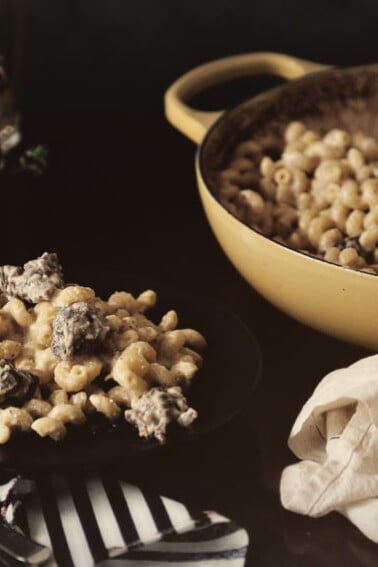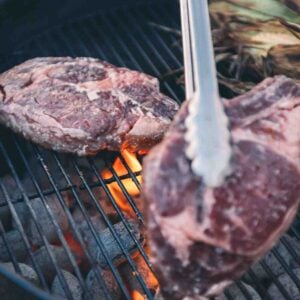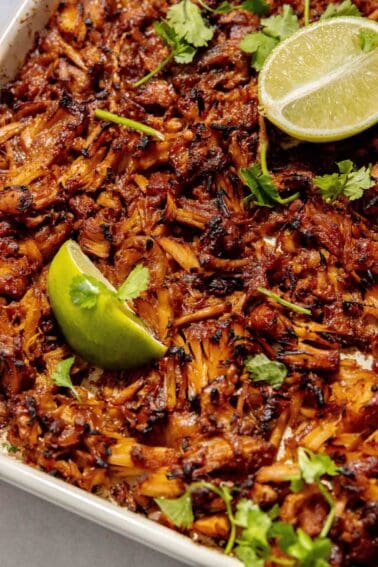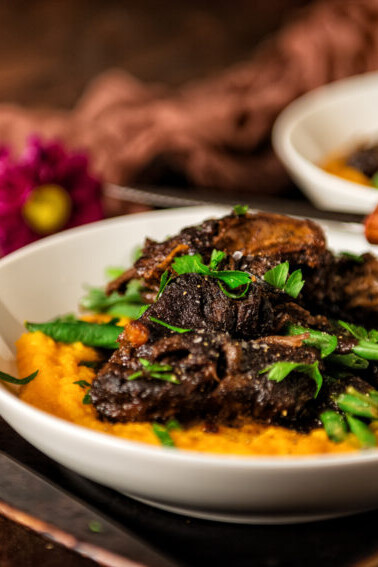Beef Recipes
The Best Braised Recipes
Poultry Recipes
Chicken Paprikash
Veal Recipes
Stuffed Breast of Veal Recipe
Beef Recipes
Braised Beef Shank
What is braising?
Braising is a time-honored cooking technique that involves two key steps: searing the food at a high temperature and then slowly cooking it in a covered pot at a lower temperature along with some liquid. This method is especially suited to tougher cuts of meat, transforming them into tender, flavorful dishes. Unlike grilling or frying, braising is a slower process that deeply infuses the meat with the flavors of the cooking liquid and seasonings. This method not only tenderizes the meat but also creates a rich, concentrated sauce that enhances the overall taste of the dish.
Why Braise?
- Simplicity and Ease: After the initial sear, the cooking process requires minimal attention, making it ideal for any skill level.
- Flavor Enhancement: The slow cooking process deepens and melds flavors, resulting in a robust and satisfying dish.
- Versatility: Braising works well with a variety of meats and ingredients, allowing for creativity in the kitchen.
In essence, braising is about low effort and high reward, yielding dishes that are rich in taste and tender in texture.
Braised Beef Recipes
Helpful How-Tos
The Best Meats for Braising
When it comes to braising, the choice of meat is crucial. This method is best suited for tougher, more flavorful cuts that benefit from long, slow cooking to become tender and juicy. Here are some of the best meats for braising, each offering its own unique taste and texture:

Beef: Look for cuts like chuck roast, brisket, and short ribs. These parts of the beef have a high amount of connective tissue and marbling, making them ideal for braising. The slow cooking process breaks down the fibers, resulting in meat that is both tender and rich in flavor.
Pork: Shoulder (including Boston butt) and ribs are excellent choices for braising. Pork’s natural fattiness renders down during braising, creating succulent and flavorful dishes.
Lamb: Shank and shoulder are the go-to cuts for braising. Lamb benefits greatly from the moist heat, which softens the meat while infusing it with the flavors of the cooking liquid.
Chicken: Though not as tough as red meats, dark meat cuts like thighs and drumsticks can be beautifully braised, offering a different texture and flavor profile. The key is to braise at a gentle simmer to keep the meat moist and tender.
Game Meats: Venison, rabbit, and duck are fantastic for braising. These meats are leaner and have a more pronounced flavor, which is mellowed and enriched through the braising process.
For the best braising experience, these meats should be cooked until they are fork-tender, a process that can take several hours but is well worth the wait. The slow cooking not only tenderizes the meat but also allows it to absorb the flavors of the braising liquid and aromatics, creating a deep, complex taste that’s hard to achieve with any other cooking method.
Our Favorite Pots for Braising
These are the Braising pots and Dutch Ovens we use in the Meat Labs. We are partial to enamel-coated cast iron for braising due to the easy cleanup. Like, worth the price tag for the crazy easy cleanup.
 Le Creuset Enameled Cast Iron Signature Round Dutch Oven, 7.25 qtBuy on Amazon →
Le Creuset Enameled Cast Iron Signature Round Dutch Oven, 7.25 qtBuy on Amazon → Lodge Seasoned Cast Iron Deep Camp Dutch Oven – 8 QuartBuy on Amazon →
Lodge Seasoned Cast Iron Deep Camp Dutch Oven – 8 QuartBuy on Amazon → Le Creuset Enameled Cast Iron Signature Braiser, 5 qt.Buy on Amazon →
Le Creuset Enameled Cast Iron Signature Braiser, 5 qt.Buy on Amazon → Lodge L8DO3 Cast Iron Dutch Oven, Pre-Seasoned, 5-Quart,BlackBuy on Amazon →
Lodge L8DO3 Cast Iron Dutch Oven, Pre-Seasoned, 5-Quart,BlackBuy on Amazon → Le Creuset Enameled Cast Iron Signature Oval Dutch Oven, 9.5 qtBuy on Amazon →
Le Creuset Enameled Cast Iron Signature Oval Dutch Oven, 9.5 qtBuy on Amazon →Global Inspired Braised Recipes
Beef Recipes
Beef Birria Recipe
Lamb Recipes
Moroccan Braised Lamb Shanks
Recipes With Pork
Pork Carnitas
Lamb Recipes
Savory Lamb Ragu with Pappardelle Pasta
Basic Steps of Braising:
- Searing: Start by heating a heavy, oven-proof pot or Dutch oven over medium-high heat. Season the meat well with salt and pepper, then sear it in hot oil until it’s browned on all sides. This crucial step creates a rich, caramelized crust that adds depth of flavor to the dish.
- Deglazing: After removing the meat, add a small amount of liquid (such as wine, broth, or even water) to the hot pan. Use a wooden spoon to scrape up the browned bits from the bottom of the pan. These bits, known as “fond,” are packed with flavor and will enrich the braising liquid.
- Adding Liquids and Aromatics: Return the meat to the pot and add enough braising liquid (stock, wine, or a combination) to come halfway up the sides of the meat. Incorporate aromatics like onions, garlic, carrots, and herbs for additional flavor.
- Slow Cooking: Cover the pot with a tight-fitting lid and transfer it to a preheated oven set at a low temperature, usually between 300°F to 350°F (150°C to 175°C). The meat should simmer gently in the liquid until it becomes wonderfully tender. This can take anywhere from a couple of hours to an entire afternoon, depending on the size and type of meat.
What is Fond?
Fond refers to the caramelized bits of meat and vegetables that stick to the bottom of the pan during searing. When deglazed, the fond dissolves into the liquid, contributing a complex flavor base to the dish.

Tips for Successful Braising:
- Choosing the Right Type of Liquid: The braising liquid is a key component of the dish, adding flavor and moisture to the meat. Use a high-quality stock like homemade beef broth or turkey stock, wine, beer, or a combination of both, and consider the flavors of any additional ingredients you’re adding. The liquid should complement the meat and aromatics.
- Maintaining the Correct Temperature: It’s important to keep the braising temperature low and steady. If the liquid is boiling vigorously, it can toughen the meat. A gentle simmer allows the meat to become tender while infusing it with the flavors of the liquid and aromatics.
- Checking for Doneness: The best way to tell if braised meat is done is by its tenderness. It should be fork-tender, easily breaking apart without being mushy. If it’s not quite there, continue cooking and check periodically.
- Resting the Meat: Once the meat is tender, remove it from the oven and let it rest in the braising liquid for a bit before serving. This allows the flavors to meld further and the meat to reabsorb some of the liquid, making it even juicier.
By following these steps and tips, you can ensure a successful braising experience, resulting in dishes that are rich in flavor and tender in texture. Whether you’re new to braising or looking to refine your technique, these guidelines will help you achieve delicious results every time.
Meat Guides & Resources
Braising Liquids and Flavors
The choice of braising liquids and flavoring agents plays a pivotal role in defining the character of the final dish. These ingredients not only contribute to the tenderness of the meat but also deeply infuse it with rich, complex flavors. Here’s a guide to selecting liquids and flavorings for your braising endeavors:

Braising Liquids:
- Stock: Beef, chicken, or vegetable stock adds a rich, savory base.
- Wine: Red wine is excellent for beef and dark meats, adding depth and acidity, while white wine suits chicken and fish, offering a lighter, more delicate flavor.
- Beer: Dark ales and stouts complement beef and pork with their malty sweetness, whereas lighter beers are great with chicken.
- Tomato Juice: Adds acidity and brightness, perfect for Mediterranean or Italian-style dishes.
- Water: The simplest option, best used with a strong bouquet of aromatics or when other liquids form part of the ingredient list.
Flavoring Options:
Herbs:
- Rosemary: Robust; pairs well with lamb and beef. Remember, rosemary can be overpowering and woodsy, so don’t use too much.
- Thyme: Versatile; enhances poultry, beef, and pork.
- Bay Leaves: Adds a subtle depth to all meats.
Spices:
- Paprika: Sweet or smoky, adds color and warmth.
- Cumin: Earthy, great for Mexican or Middle Eastern dishes.
- Cinnamon: A touch of warmth for unique braises that use red meat.
Aromatics:
- Onions and Garlic: The foundation for flavor development.
- Carrots and Celery: Add sweetness and body to the braising liquid.
Great Flavor Combos for Graising
The magic of braising comes from the harmonious blend of liquids and flavorings. Here are some popular combinations:
- Beef + Red Wine + Rosemary + Onions
- Pork + Beer + Paprika + Garlic
- Chicken + White Wine + Thyme + Lemon Juice
- Lamb + Tomatoes + Cumin + Bay Leaves
When selecting your braising liquid and flavoring agents, consider the final flavor profile you’re aiming for. The richness of the liquid should complement the meat and the aromatics should add layers of flavor without overwhelming the dish. Experimenting with different combinations will lead you to discover your own signature braising style.

Care and Maintenance of Braising Cookware
We love our Lodge and Le Creuset pots, Dutch ovens, and braisers, but they aren’t cheap. So we make sure to take good care of them.
Proper care and maintenance of your braising cookware, especially high-quality enamel-coated pots, are essential for ensuring they last for lifetimes and continue to perform at their best. Here’s a concise guide to keeping your braising essentials in top condition:
Enamel-Coated Cast Iron (e.g., Le Creuset):
Cleaning: Wait for the pot to cool before washing. Use warm, soapy water and a soft sponge to clean. Avoid using steel wool or abrasive cleaners that can damage the enamel surface. For tough stains, soak in warm, soapy water before cleaning.
Maintenance: Dry thoroughly after washing to prevent rust. Store with the lid slightly ajar to allow air circulation and prevent moisture buildup.
Seasoning and Cleaning Cast Iron:
How to Season Cast Iron: If you’re using traditional cast iron cookware for braising, seasoning it correctly is key. Coat the cookware lightly with vegetable oil and bake it upside down in the oven at 375°F (190°C) for an hour. This process creates a natural, non-stick surface.
How to Clean Cast Iron: Clean immediately after use with hot water; avoid soap to maintain the seasoning. For stuck-on food, scrub with a paste of coarse kosher salt and water, then rinse and dry thoroughly. Re-oil lightly after each wash.
General Tips:
- Avoid Thermal Shock: Never quench a hot pot with cold water or place it in the refrigerator. Sudden temperature changes can cause enamel to crack and cast iron to rust.
- Use Wooden or Silicone Utensils: To preserve the integrity of the pot’s surface, avoid metal utensils that can scratch enamel or damage the seasoning on bare cast iron.
These tips will help keep your braising cookware in prime condition for years to come.
Braising vs. Pressure Cooking vs. Slow Cooking
Braising, pressure cooking, and slow cooking are all popular methods for making tough cuts of meat tender and flavorful, but they differ significantly in their approach and the results they yield. And although we love our slow cooker and pressure cooker, we believe the richest flavors come from braising.
| Braising: | Pressure Cooking: | Slow Cooking: |
|---|---|---|
| Method: Involves searing meat at a high temperature and then cooking it slowly in a small amount of liquid in a covered pot, typically in the oven or on the stovetop. Time: Takes several hours, allowing flavors to develop slowly and meld together. Results: Produces meat that is tender and a sauce that is rich and concentrated in flavor. | Method: Involves cooking food at a very low temperature for a long period, typically in an electric slow cooker. Time: It can take anywhere from 4 to 12 hours, depending on the setting. It’s a “set it and forget it” method, requiring little supervision. Results: Meat becomes exceptionally tender, and flavors meld together, although the sauce might be less concentrated than in braising. | Method: Involves cooking food at a very low temperature for a long period, typically in an electric slow cooker. Time: Can take anywhere from 4 to 12 hours, depending on the setting. It’s a “set it and forget it” method, requiring little supervision. Results: Meat becomes exceptionally tender, and flavors meld together, although the sauce might be less concentrated than in braising. |
Key Differences:
- Control Over Cooking: Braising offers more control over the cooking process, allowing for browning and adjusting liquid levels.
- Speed: Pressure cooking is the fastest method, while slow cooking and braising take longer but often result in deeper flavors.
- Flavor Concentration: Braising typically results in a more concentrated sauce and caramelized flavors due to the initial searing and gradual reduction of the cooking liquid.
Each method has its advantages, depending on the desired outcome and the time available. Braising stands out as our favorite when we have the time and doesn’t need to be as hands-off as the Crockpot for its ability to really develop complex flavors and textures, making it a preferred technique for dishes where taste and sauce quality are paramount. Like the ones below…
Newest Braising Recipes
Recipes With Pork
Cider Braised Pork Short Ribs
Recipes With Pork
Braised Pork Shanks
Beef Recipes
Osso Buco
Recipes With Pork
Easy Dutch Oven Carnitas
Beef Recipes
Dutch Oven Pot Roast
Poultry Recipes
Chicken Paprikash
Veal Recipes
Stuffed Breast of Veal Recipe
Beef Recipes
Braised Beef Shank
Beef Recipes
Braised Beef Cheek Ragu
Beef Recipes
Beef Birria Recipe
Lamb Recipes
Savory Lamb Ragu with Pappardelle Pasta
Recipes With Pork
Oven Roasted Pulled Pork Recipe
Lamb Recipes
Moroccan Braised Lamb Shanks
Beef Recipes
Slow Cooker Short Ribs
Beef Recipes
Braised Short Ribs with Stout
Recipes With Pork








































